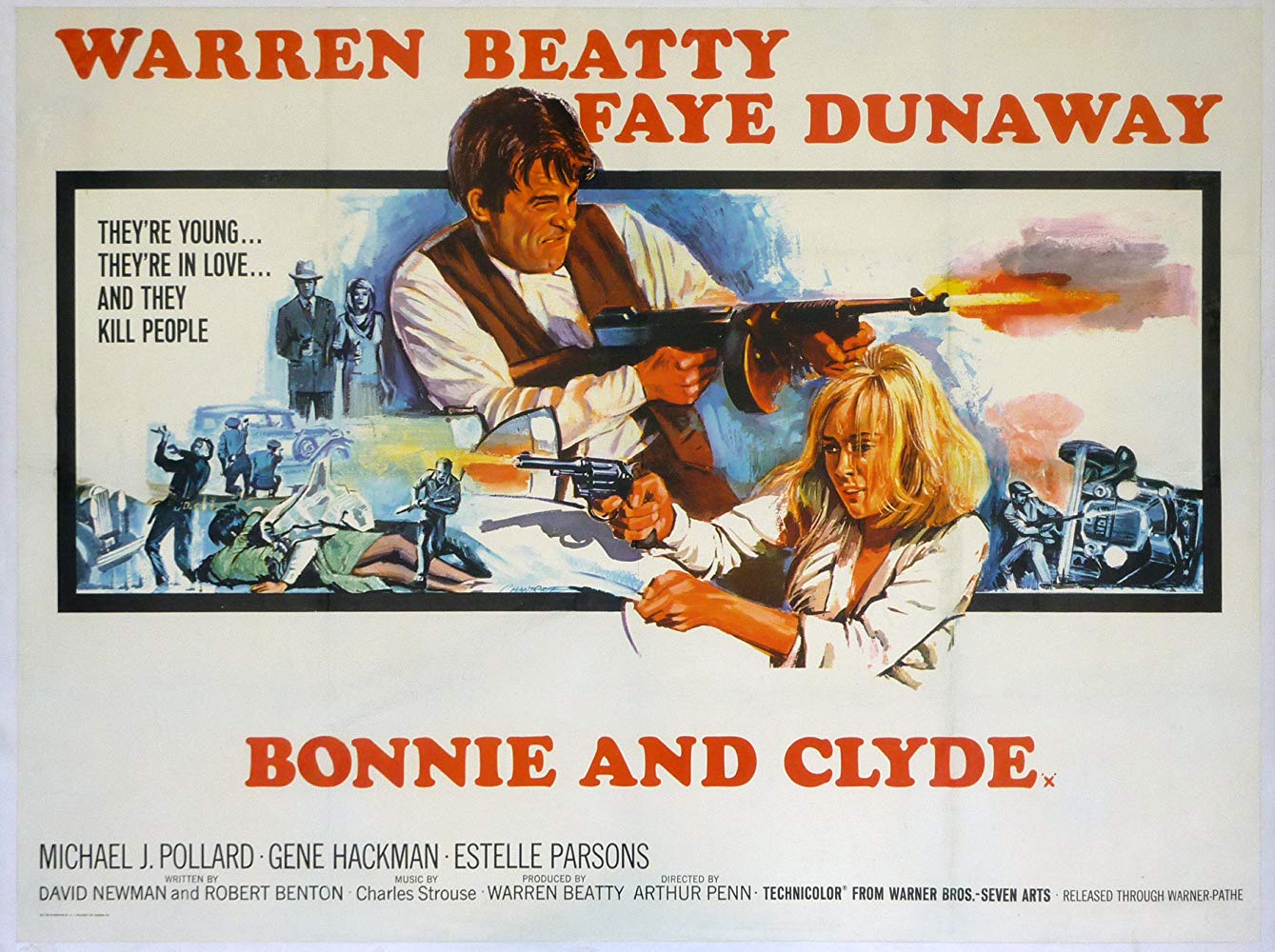
Bonnie and Clyde, released in 1967, is a landmark film in the history of cinema. Directed by Arthur Penn, this crime drama tells the gripping and tragic story of the notorious American outlaws Clyde Barrow and Bonnie Parker. The film is not only known for its thrilling plot and incredible performances but also for its groundbreaking approach to storytelling and its impact on the genre of crime films. With its mix of action, romance, and social commentary, Bonnie and Clyde captured the hearts of audiences and earned critical acclaim. In this article, we delve into the fascinating world of Bonnie and Clyde and explore 45 interesting facts about this iconic movie.
Key Takeaways:
- “Bonnie and Clyde” revolutionized crime dramas, blending romance and violence to create a captivating and intense viewing experience. It popularized the concept of the anti-hero and inspired filmmakers to push boundaries.
- The film’s iconic poster, shocking ending, and Faye Dunaway’s standout performance made “Bonnie and Clyde” a cultural artifact, capturing the essence of the 1930s and influencing the New Hollywood era.
Revolutionary Crime Drama
Bonnie and Clyde is a revolutionary crime drama that was released in 1967.
Directed by Arthur Penn
The film was directed by Arthur Penn, who brought a unique and stylistic approach to the movie.
Based on True Events
The story of Bonnie and Clyde is based on the real-life criminals Bonnie Parker and Clyde Barrow.
Portrayed by Faye Dunaway and Warren Beatty
Faye Dunaway and Warren Beatty portrayed the infamous duo, bringing their characters to life with remarkable performances.
Controversial Reception
Upon its release, Bonnie and Clyde received mixed reviews and faced controversy due to its graphic violence.
Iconic Poster
The movie’s poster, featuring Dunaway and Beatty, has become an iconic image in film history.
Academy Awards Recognition
Bonnie and Clyde was nominated for ten Academy Awards, including Best Picture and Best Director.
Groundbreaking Cinematography
The film’s cinematography, by Burnett Guffey, showcased innovative techniques and helped establish a new visual style.
Depiction of the Great Depression
Bonnie and Clyde depicted the hardships and desperation of the Great Depression era.
A Mix of Romance and Violence
The movie brilliantly blended elements of romance and violence, creating a captivating and intense viewing experience.
Popularized the Anti-Heroes
Bonnie and Clyde popularized the concept of the anti-hero, making the audience sympathize with the criminal protagonists.
Cultural Impact
The film had a significant cultural impact and influenced subsequent crime dramas and road movies.
Historical Accuracy
Despite some fictionalization, Bonnie and Clyde made efforts to stay true to the historical events.
Carried Out Robberies
The real Bonnie and Clyde were notorious for their bank robberies and vehicle thefts during the early 1930s.
Infamous Criminals
Bonnie Parker and Clyde Barrow became infamous in American criminal history due to their violent crime spree.
Tragic Love Story
At its core, Bonnie and Clyde is a tragic love story of two individuals caught in a life of crime and passion.
Supporting Cast
The film featured an exceptional supporting cast, including Gene Hackman, Estelle Parsons, and Michael J. Pollard.
Creative Collaboration
The collaboration between director Arthur Penn, cinematographer Burnett Guffey, and screenwriters David Newman and Robert Benton resulted in a powerful cinematic experience.
Realistic Bank Robbery Scenes
The bank robbery scenes in Bonnie and Clyde were known for their realism, capturing the chaotic nature of the crimes.
Jerry Fielding’s Score
The film’s score, composed by Jerry Fielding, added to the tension and emotion of the narrative.
Criticized for Glamorizing Violence
Bonnie and Clyde received criticism for seemingly glamorizing violence and turning criminals into sympathetic figures.
Historical Significance
The film is considered historically significant for its portrayal of Depression-era America and the criminal subculture of the time.
Inspired Other Filmmakers
Bonnie and Clyde inspired a generation of filmmakers to push boundaries and explore unconventional storytelling techniques.
Box Office Success
Despite the initial mixed reviews, Bonnie and Clyde was a commercial success, grossing over $50 million worldwide.
Revolutionized the Ending
The film’s shocking and unexpected ending revolutionized the way audiences perceive the conclusion of a movie.
Real-Life Photographs
The film’s promotional material included actual photographs of Bonnie and Clyde, adding to the authenticity of the story.
Departure from Traditional Hollywood
Bonnie and Clyde marked a departure from the traditional Hollywood filmmaking style, embracing a more independent and artistic approach.
Bonnie’s Infamous Quote
Bonnie Parker’s famous quote, “We rob banks,” has become synonymous with the film and its depiction of the duo’s criminal activities.
Thematic Exploration
The movie explores themes of rebellion, mortality, and the pursuit of freedom in a society plagued by economic hardship.
Cultural Artifacts
Several props and costumes from Bonnie and Clyde, including Clyde’s shotgun and Bonnie’s beret, have become cultural artifacts displayed in museums.
Condemned by Critics
While some critics condemned the film’s glorification of violence, others praised its innovative storytelling and strong performances.
Historical Accuracy Debate
There is an ongoing debate among historians regarding the accuracy of Bonnie and Clyde’s depiction and its impact on popular perceptions of the couple.
Major Influence on New Hollywood
Bonnie and Clyde is often cited as one of the key films that contributed to the rise of the New Hollywood era in the late 1960s and 1970s.
Memorable Shootout Scene
The film features a memorable shootout scene that has been referenced in various other movies and TV shows.
Cultural Time Capsule
Bonnie and Clyde serves as a time capsule, capturing the essence of the 1930s and the social dynamics of the era.
Bonnie and Clyde Death Car
The actual car that Bonnie and Clyde were in when they were killed is now preserved and displayed at a museum.
Exploration of Gender Roles
The film delves into the shifting gender dynamics of the time, presenting Bonnie as a strong and assertive character within a male-dominated world.
Controversial Marketing Campaign
The marketing campaign for Bonnie and Clyde stirred controversy by focusing on the glamorous aspects of the characters rather than the criminal activities.
Inspired Bonnie and Clyde Fashion
The film’s fashion, particularly Bonnie’s beret and sleek outfits, inspired a trend in women’s fashion during the late 1960s.
Contemptuous Relationship with Authority
Bonnie and Clyde’s contemptuous relationship with authority figures resonated with audiences during a period of social unrest and anti-establishment sentiments.
Symbolism Through Costumes
The costumes worn by Bonnie and Clyde, such as their matching berets, became symbolic of their rebellious spirit and unity.
Impactful Violent Scenes
The film’s violent scenes had a lasting impact on audiences, challenging traditional notions of on-screen violence.
Historical Documentation
The film was based on extensive research and interviews conducted with individuals who knew Bonnie and Clyde or were involved in the events surrounding them.
Faye Dunaway’s Career Highlight
Faye Dunaway’s performance as Bonnie became one of the defining roles of her career, earning her critical acclaim and cementing her status as a leading actress.
Enduring Legacy
After more than 50 years, Bonnie and Clyde continues to be celebrated as a groundbreaking and influential film in the history of cinema.
Conclusion
In conclusion, “Bonnie and Clyde” is a timeless classic that has captivated audiences for decades. The film’s groundbreaking portrayal of the infamous criminal duo, along with its innovative storytelling and unforgettable performances, have solidified its place in cinema history. From its thrilling action sequences to its nuanced exploration of love and rebellion, “Bonnie and Clyde” continues to captivate and inspire viewers of all generations. The movie’s impact on popular culture cannot be overstated, making it a must-watch for any film enthusiast. So grab some popcorn, sit back, and embark on a wild ride with Bonnie and Clyde.
FAQs
1. Is “Bonnie and Clyde” based on a true story?
Yes, “Bonnie and Clyde” is based on the real-life criminal couple Bonnie Parker and Clyde Barrow who robbed banks and committed multiple acts of violence during the Great Depression.
2. When was “Bonnie and Clyde” released?
The film was released in 1967 and was directed by Arthur Penn.
3. Who were the main actors in “Bonnie and Clyde”?
Warren Beatty and Faye Dunaway portrayed the iconic roles of Clyde Barrow and Bonnie Parker respectively.
4. Did “Bonnie and Clyde” receive any awards?
Yes, the film received ten Academy Award nominations including Best Picture, and won two Oscars for Best Supporting Actress and Best Cinematography.
5. How did “Bonnie and Clyde” impact the film industry?
Bonnie and Clyde” revolutionized the crime genre by introducing gritty realism and a sympathetic portrayal of criminals, paving the way for future films that challenged traditional storytelling conventions.
If you enjoyed learning about Bonnie and Clyde, why not explore more captivating films? Discover the gritty underbelly of Los Angeles in the crime film L.A. Confidential, or delve into the fascinating life story of a comedy legend with the biographical film The Life and Death of Peter Sellers. For those craving more thrilling heists, check out the intense bank robbers in the movie The Town. Each of these films offers a unique cinematic experience sure to keep you on the edge of your seat.
Was this page helpful?
Our commitment to delivering trustworthy and engaging content is at the heart of what we do. Each fact on our site is contributed by real users like you, bringing a wealth of diverse insights and information. To ensure the highest standards of accuracy and reliability, our dedicated editors meticulously review each submission. This process guarantees that the facts we share are not only fascinating but also credible. Trust in our commitment to quality and authenticity as you explore and learn with us.


